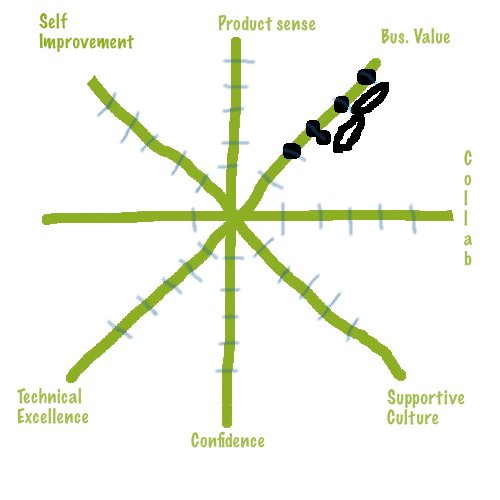Pillar Spiderweb retrospectives
I was asked for more details about the pillar-based retrospectives I mentioned earlier.
Preparation
Have scrap paper or notecards, plus writing instruments.

Execution
The team assembles and sits. They get some paper.
I let a random person pick which pillar to start with. I describe it to them, then tell them to individually rate the whole team against it, on a one-to-five scale, five being the best, then write their rating on some paper. I tell them they can pick a range if they’re not sure which number to pick. (I think that’s what numbers like “3.5″ often mean.)
(In the future, I’ll have the team come to some consensus about what they mean by “one” and “five”. Some people, for example, consider “five” perfection and thus unattainable.)
When they’re ready, they hand the paper to me. While that does make it less obvious which person wrote which number, that’s a minor motivation. I do it more because it gives each person control over how long to think.
Then I plot the values on the spider chart, like this:

Then I invite the team to discuss whatever the spread or values bring to mind. If I see something no one mentions, I bring it up, but the discussion is really in their hands. Their talk may lead to action items, but I don’t force it.
After the discussion of one pillar dies down, I have someone pick the next one. (I think that each time we soon just started going clockwise or anti-clockwise.)
It seems like these retrospectives want to be about an hour long.

October 16th, 2009 at 12:05 pm
[…] – The Cooperative Game) available which are lighter. In addition the one I had read from Brian Marick is also very interesting on the topic. Overall the approaches look very similar in order to try to […]